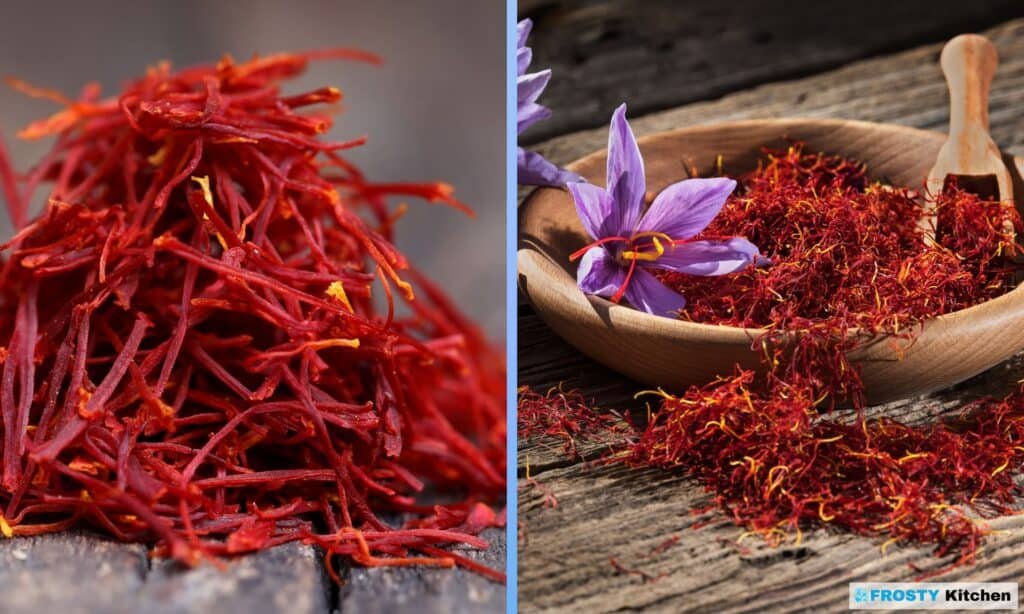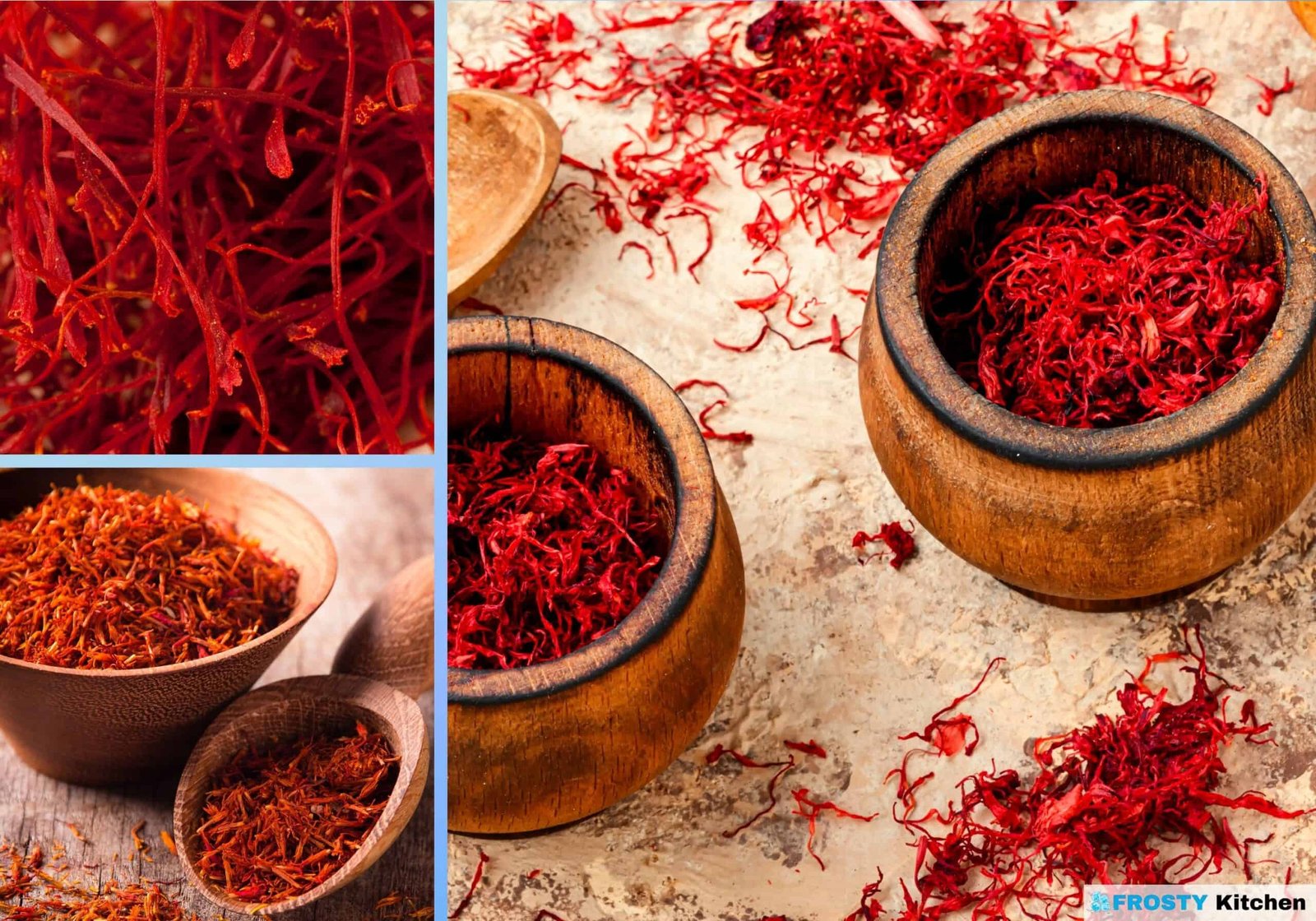Embarking on the journey of preserving the golden threads of saffron is akin to securing a culinary treasure. Your passion for the finest flavors deserves a reliable companion that unveils the secrets of freezing saffron. This guide is curated to be that companion, ensuring that the exotic aroma and rich color of saffron are at your fingertips whenever your dishes call for a royal touch.
Saffron, a spice as old as time, carries with it a rich history and an essence that has the power to elevate any dish to a gourmet level. Its distinct aroma and vibrant color have charmed many a palate across different cultures.
As you delve into the realm of this guide, you are not only mastering the art of freezing saffron but also exploring its historical significance, nutritional benefits, and the essence that has made it the king of spices. Let’s unravel the golden narrative together!
What is Saffron?
Saffron is the world’s most expensive spice, obtained from the flower of Crocus sativus, known for its vibrant color and unique aroma.
Origin and History
- Originating from Greece or Southwest Asia, saffron has been a coveted spice for over 3,000 years, celebrated for its medicinal properties and as a potent colorant and flavoring agent.
- Its journey through ancient civilizations has left a mark on various culinary traditions, making it a revered spice in many cultures.
Nutritional Value
- Saffron is a goldmine of antioxidants, which are linked to various health benefits including improved mood, libido, and potentially reduced risk of certain diseases.
- Moreover, the spice is rich in vitamins like vitamin C and minerals such as magnesium and iron, making it a beneficial addition to a well-rounded diet.

Benefits of Freezing Saffron
- Preservation of Exotic Aroma and Color: Freezing saffron aids in retaining its unique aroma and color, ensuring a fresh supply for your culinary endeavors.
- Extended Shelf Life: Through freezing, you can extend the shelf life of saffron, ensuring a steady supply for your aromatic dishes.
- Ease of Use: With frozen saffron, you have the convenience of using it directly from the freezer whenever needed.
Preparing Saffron for Freezing
- Packaging: Utilize airtight, freezer-safe containers or vacuum-sealed bags to keep saffron protected from moisture and freezer burn.
- Portioning: Divide saffron into usable portions to facilitate easy use post-freezing.
Step-by-Step Guide to Freezing Saffron
Preserving the royal essence of saffron through freezing is a simplistic endeavor. The methods elucidated below guide you through the process, ensuring the preservation of its aromatic and colorant properties.
Method 1: Freezing Whole Saffron Threads
- Preparation: Ensure saffron threads are clean and dry.
- Storage: Transfer them into airtight containers.
- Freezing: Place the containers in the freezer, ensuring they lay flat for uniform freezing.
Method 2: Freezing Ground Saffron
- Preparation: If you prefer ground saffron, grind the threads to your desired consistency.
- Storage: Transfer the ground saffron into airtight containers or bags.
- Freezing: Place the containers or bags in the freezer.
Refreezing Saffron
Refreezing saffron is not advisable as it may lead to a loss in aroma and color. The process of refreezing can also potentially introduce harmful bacteria if not handled with care.
Moreover, refreezing might significantly diminish the quality of saffron. It’s advisable to portion the saffron adequately before the initial freezing, thus avoiding the need for refreezing.
Storage Duration and Factors Affecting it
- Duration: Frozen saffron can be stored for up to 6 to 12 months, depending on the initial freshness and the storage conditions.
- Storage Containers: Employing airtight containers or vacuum-sealed bags is crucial to prevent freezer burn and maintain the quality of saffron.
- Factors: The initial freshness of saffron, the method of freezing, and the consistency of the freezing temperature significantly impact the storage duration.
Frequently Asked Questions
Q1: How can I use frozen saffron?
- Utilizing frozen saffron is a straightforward endeavor. It can be used directly from the freezer without any need for thawing, retaining its vibrant color and exotic aroma.
- The convenience associated with frozen saffron simplifies the cooking process, allowing you to focus on crafting delightful dishes imbued with the royal essence of saffron.
Q2: Does saffron lose its aroma over time?
- Yes, saffron can lose its aroma over time, especially when exposed to unfavorable conditions like air, light, or moisture. However, freezing significantly slows down this process, preserving its exotic essence for a longer duration.
- Additionally, storing saffron in airtight containers in a cool, dark place can also aid in preserving its aroma. The advantage of freezing is unparalleled as it locks in the aroma, ensuring the saffron retains its essence whenever you decide to use it.
Q3: Can I grind saffron before freezing?
- Grinding saffron before freezing is a practical approach if you plan to use it in ground form. It allows for quicker freezing and thawing, which can be a real-time save during busy cooking sessions.
- However, it’s essential to note that whole saffron threads retain their aroma and color better than ground saffron. If you decide to freeze ground saffron, ensure they are stored in airtight, freezer-safe containers to minimize exposure to air and other elements that could degrade its quality.

